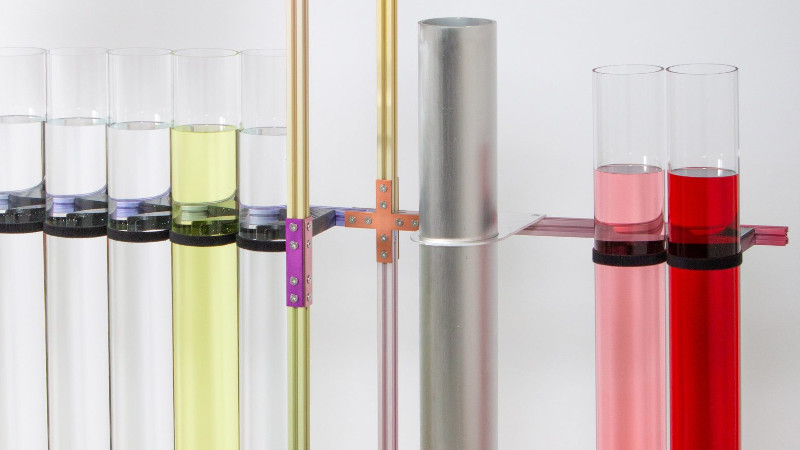Anodizing aluminium, the process of electrolytic build up of the metal’s the oxide layer in the presence of dyes to create colored effects, is such a well-established process that we probably all have anodized items within sight. It’s usually an industrial mass-production process that creates a uniform result, but there’s an anodizing machine from a Dutch design studio which promises to place anodized aluminium in a new light. Studio Loop Loop’s Magic Color Machine enacts a small-scale automated anodizing process driven by a microcontroller, and is capable of effects such as gradated colors.
Unfortunately their website is long on marketing and short on technical details, but the basic function of a line of chemical baths with a pulley to lower and lift the item being anodized shouldn’t be too difficult for any Hackaday reader to understand. There’s a short video clip posted on Instagram which also gives some idea. It’s a powerful idea that should lead to some eye-catching work for their studio, but its interest here lies in the techniques it might inspire others to try. We look forward to an open-source version of a gradated anodize. Meanwhile if anodizing takes your fancy, it’s a subject we’ve visited before.

















Unlike titanium, which turns pretty colors when anodized, anodized aluminum is colorless. To get colors, you dye that layer of aluminum oxide. What they’re doing above is applying dye for different amount of time so that more or less of the pigment soaks in – it’s very similar to applying a gradient to a dyed egg.
It would be nice to see an automated machine for applying such gradients to titanium, with programmatic control of voltage over time.
maybe any CNC-like machine would already be usable for this task, considering you only need to control one axis and one variable voltage. It has less uses however because titanium rarer than aluminium
Olight has produced several gradient dyed anodized aluminum flashlights.
As has been said, you can apply the colour any way you want. Back in the 90s Petzl used to use “splash anodizing “ on climbing gear (try that as an image search term)
Inkjet printing would work too, and I think I have seen signs made by anodizing, printing and sealing.
Inkjet printing would work too, and I think I have seen signs made by anodizing, printing and sealing.
That’s a fantastic idea. I wonder if it can be made to work in my workflow?
I’ve found that separate dye and seal steps fade the colour: The seal bath pulls a lot of the dye out before it gets sealed. So, normally I bring the part up from cold to boiling in the dye bath, then continue sealing in the boiling water. Not scalable to even small batch production because of the time required but works well for me, yielding nice, intense colour.
So, I’m guessing the way to make the inkjet approach work is to first dry the part, print on it, then allow the ink to thoroughly dry (bake it maybe?) before trying to seal.
Been done years ago now.
https://jorlink.com/machines/showcase-videos/dcs-printing-showcase/material-substrates/anodized-aluminum-printing
This imaging system allows you to digitally create durable, full-color images on anodized aluminum and subsequently seal the image under the anodized layer, making it virtually impervious to abrasion, chemicals, moisture, humidity and salt spray.
They should update their website but basically anodize, inkjet print, seal.
“Every object is given a unique code that relates to how it was produced, so that the component could be easy replicated or replaced in the future. The idea is to support a circular economy.”
In current times, this would more likely being used to create random objects and sell NFTs rather than to improve the world.
maybe everything which isn’t a random plate or tube should be given a printed unique part number like barcodes, but this process would add another complicated step to production, and it seems in the industry, they aren’t very fond of public schematics and parts
My daughter is a fabric artist. One of the effects she wanted with the gowns she makes is a smooth graduated color in her material. I made a geared pulley system with a cord running up to a pulley on the shower curtain. DC motor driven for variable DC speed control with a universal computer power supply. As a wife of a diplomat, they live in many different countries, currently stationed in Mongolia. She is also a felter, enjoying the very high quality wool in central Asia. I’ve made several machines to help her with that art.